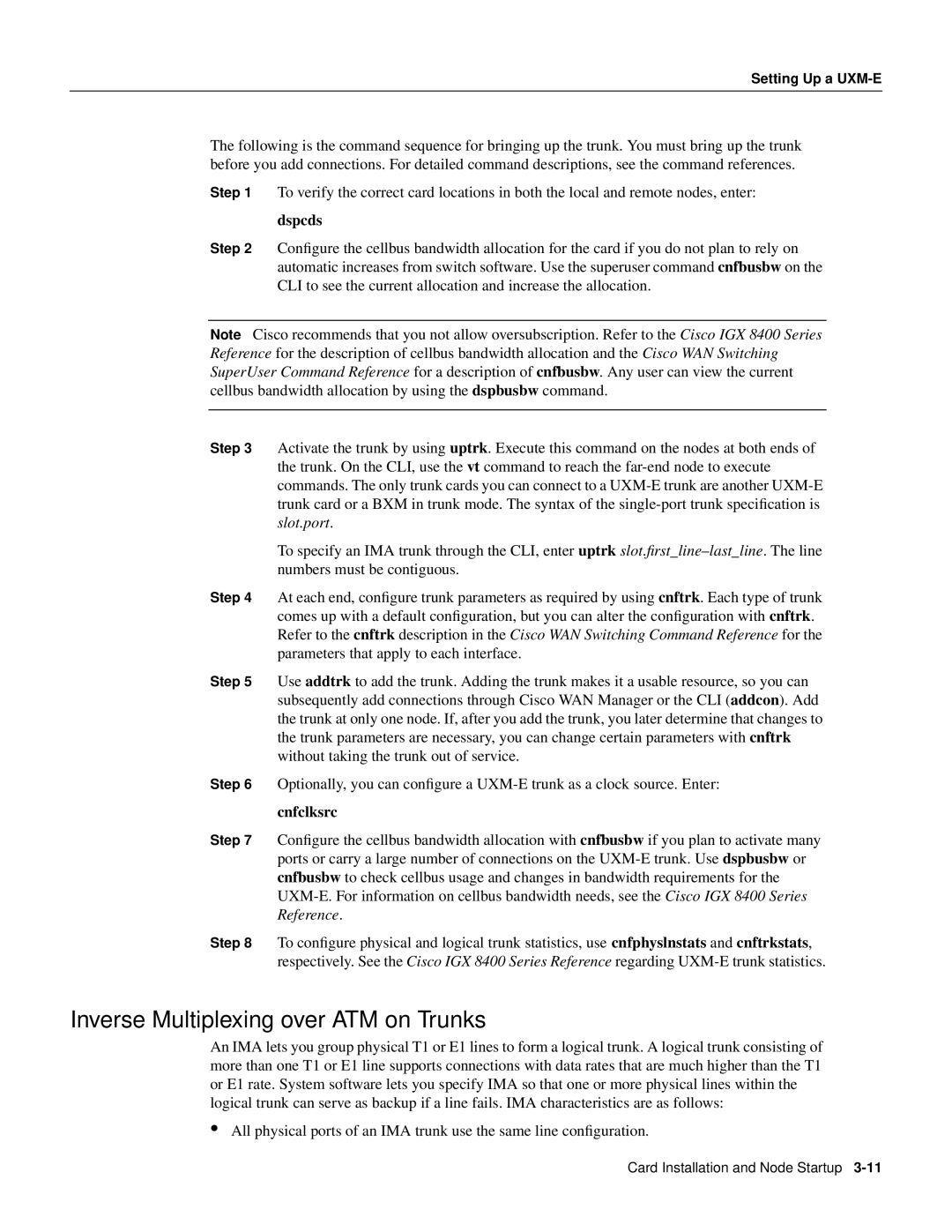
Setting Up a UXM-E
The following is the command sequence for bringing up the trunk. You must bring up the trunk before you add connections. For detailed command descriptions, see the command references.
Step 1 To verify the correct card locations in both the local and remote nodes, enter:
dspcds
Step 2 Configure the cellbus bandwidth allocation for the card if you do not plan to rely on automatic increases from switch software. Use the superuser command cnfbusbw on the CLI to see the current allocation and increase the allocation.
Note Cisco recommends that you not allow oversubscription. Refer to the Cisco IGX 8400 Series Reference for the description of cellbus bandwidth allocation and the Cisco WAN Switching SuperUser Command Reference for a description of cnfbusbw. Any user can view the current cellbus bandwidth allocation by using the dspbusbw command.
Step 3 Activate the trunk by using uptrk. Execute this command on the nodes at both ends of the trunk. On the CLI, use the vt command to reach the
To specify an IMA trunk through the CLI, enter uptrk slot.first_line
Step 4 At each end, configure trunk parameters as required by using cnftrk. Each type of trunk comes up with a default configuration, but you can alter the configuration with cnftrk. Refer to the cnftrk description in the Cisco WAN Switching Command Reference for the parameters that apply to each interface.
Step 5 Use addtrk to add the trunk. Adding the trunk makes it a usable resource, so you can subsequently add connections through Cisco WAN Manager or the CLI (addcon). Add the trunk at only one node. If, after you add the trunk, you later determine that changes to the trunk parameters are necessary, you can change certain parameters with cnftrk without taking the trunk out of service.
Step 6 Optionally, you can configure a
cnfclksrc
Step 7 Configure the cellbus bandwidth allocation with cnfbusbw if you plan to activate many ports or carry a large number of connections on the
Step 8 To configure physical and logical trunk statistics, use cnfphyslnstats and cnftrkstats, respectively. See the Cisco IGX 8400 Series Reference regarding
Inverse Multiplexing over ATM on Trunks
An IMA lets you group physical T1 or E1 lines to form a logical trunk. A logical trunk consisting of more than one T1 or E1 line supports connections with data rates that are much higher than the T1 or E1 rate. System software lets you specify IMA so that one or more physical lines within the logical trunk can serve as backup if a line fails. IMA characteristics are as follows:
•All physical ports of an IMA trunk use the same line configuration.
Card Installation and Node Startup
